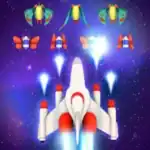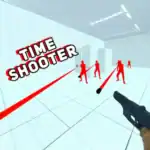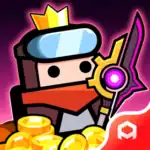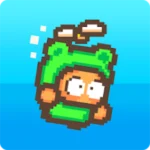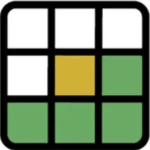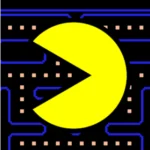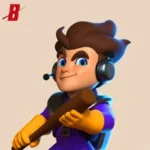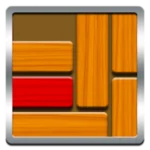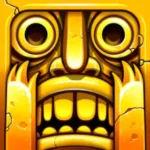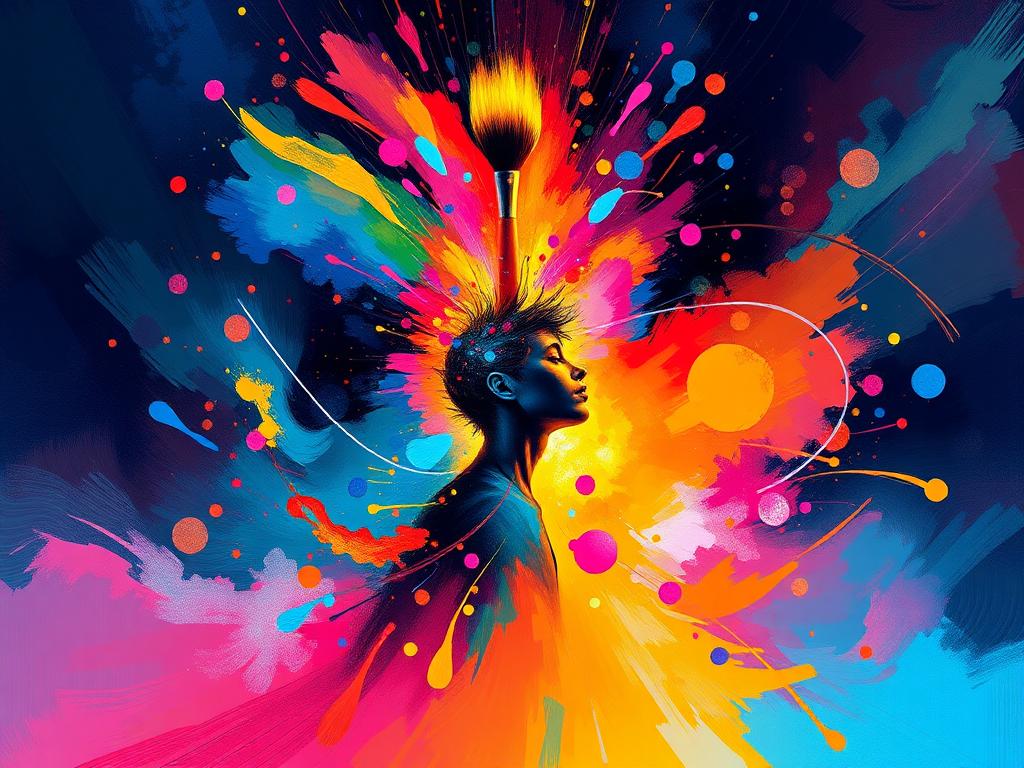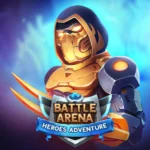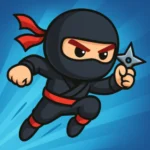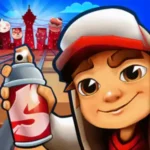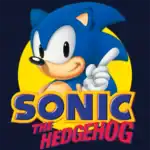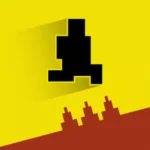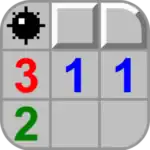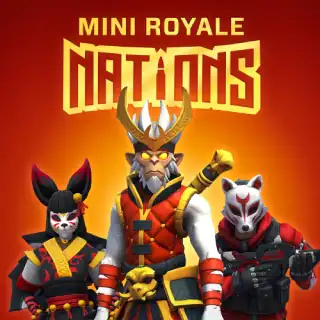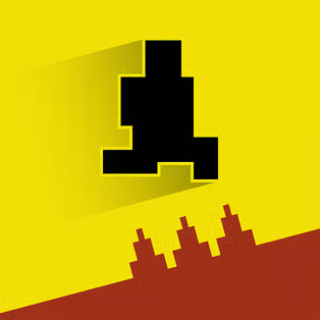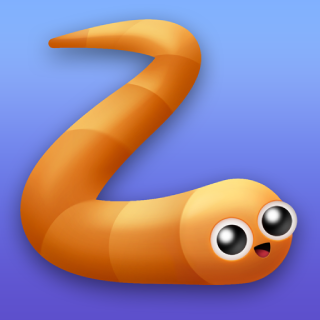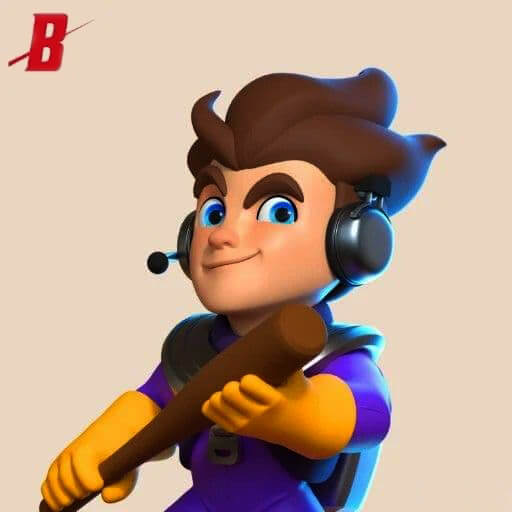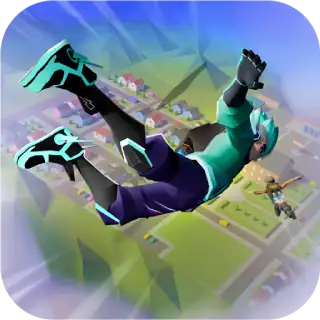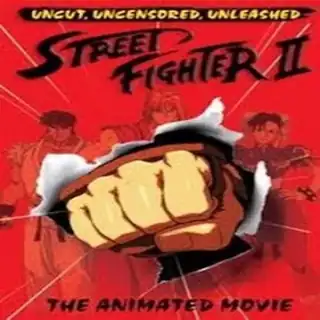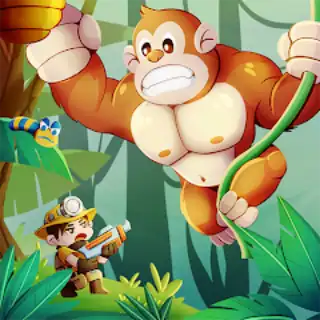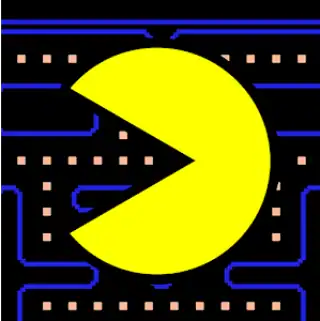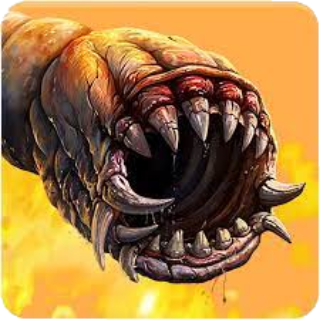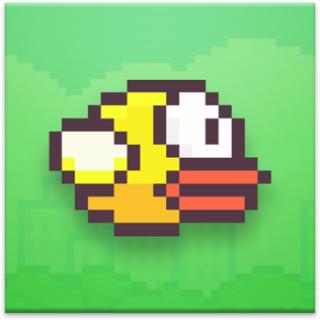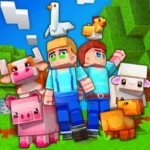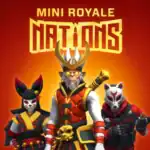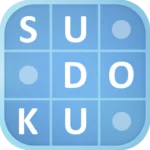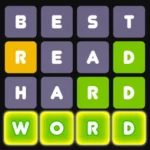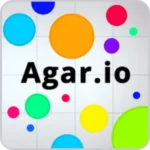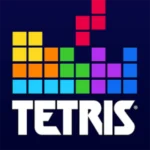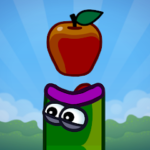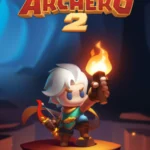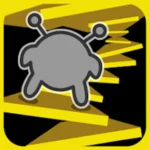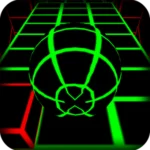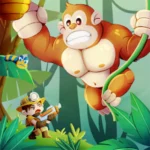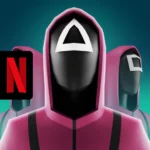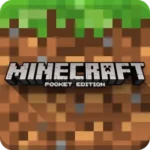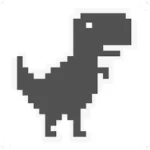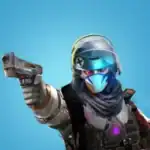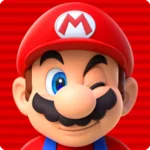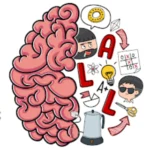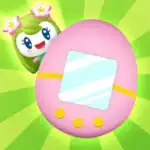Unleash Your Inner Artist: The Best Browser Art Creation Games
In a world increasingly tethered to screens, the human urge to create remains undimmed, often finding novel outlets in the digital realm. Gone are the days when art required expensive software, specialized hardware, or even physical space. Today, the purest expression of creativity is often just a click away, residing within the vast, accessible landscape of your web browser. Imagine a limitless canvas, a boundless palette, and an array of tools that respond instantly to your every whim, all without a single download or complex installation. This is the promise of browser art games – a burgeoning universe where anyone, regardless of skill level, can dip their toes into online art creation. This comprehensive guide will plunge into the depths of these incredible platforms, exploring the most intuitive, feature-rich, and utterly captivating free drawing games and digital art browser tools that are redefining accessibility for aspiring and seasoned artists alike. Get ready to discover the best art games and online painting games, and unlock the full potential of your creative spirit using cutting-edge art tools browser experiences designed to spark your imagination and foster boundless creativity games online. The canvas awaits!
The Dawn of Digital Canvases: Why Browser Art Games Reign in 2025
The landscape of digital art has undergone a seismic shift, propelled by advancements in web technology and a global hunger for accessible creative outlets. In 2025, browser art games are no longer mere novelties; they are powerful, sophisticated platforms challenging the dominance of traditional desktop software. Their rise is fueled by an unparalleled level of accessibility. Imagine: no cumbersome downloads, no intricate installation processes, no compatibility issues across operating systems. All you need is a web browser and an internet connection, transforming virtually any device—from a budget Chromebook to a high-end workstation—into a vibrant studio for online art creation. This low barrier to entry democratizes digital art, inviting millions who might otherwise be intimidated by the learning curve or cost of professional tools. Whether you’re a complete beginner seeking free drawing games to doodle with, or an experienced artist looking for a quick, portable digital art browser solution, these platforms deliver.
Beyond mere accessibility, the innovation embedded within these creativity games online is breathtaking. Modern web standards like HTML5, WebGL, and WebAssembly have transformed the browser into a high-performance engine capable of handling complex graphics, real-time rendering, and intricate brush physics. This technological leap means that online painting games and drawing applications can now offer features previously exclusive to desktop programs, often with surprising fluidity. Furthermore, the collaborative aspect is a game-changer. Many browser art games facilitate real-time shared canvases, allowing artists from across the globe to co-create, brainstorm, and learn from each other in dynamic, interactive sessions. This fosters a vibrant community, turning solitary creative pursuits into social experiences. This fusion of power, ease of access, and community engagement makes browser art games not just convenient, but revolutionary, setting the stage for an era where the act of creation is as fluid and boundless as the imagination itself. For more on how these platforms have evolved, check out How Browser Games Have Evolved Over the Years.
Mastering the Basics: Essential Tools in Any Browser Art Game
To truly unleash your inner artist within the realm of browser art games, understanding the foundational tools is paramount. While each online art creation platform boasts unique features, a core set of functionalities forms the backbone of nearly every free drawing game and digital art browser application. Mastering these basics will empower you to navigate any digital canvas with confidence, transforming your ideas into tangible artworks. The ubiquitous ‘Brush’ and ‘Pencil’ tools are your primary instruments. Brushes often come with a myriad of customizable properties: size, opacity (how transparent the stroke is), flow (how quickly paint is applied), and even texture. Experimenting with these settings allows for a vast range of effects, from delicate washes to bold, impasto strokes. The ‘Eraser’ tool, often overlooked, is equally crucial. It’s not just for correcting mistakes; a soft, low-opacity eraser can be used for blending, creating atmospheric effects, or gently shaping forms, making it an essential art tools browser component for refined detailing.
Color is the soul of any artwork, and online painting games provide intuitive ways to manage it. Most platforms offer a color picker allowing you to select hues using RGB (Red, Green, Blue) or HSL (Hue, Saturation, Lightness) sliders, or by simply clicking on a color wheel. The ability to save custom palettes is invaluable for maintaining color consistency across your piece or for developing a signature style. The ‘Fill’ tool is perfect for quickly laying down large areas of solid color or gradients. Perhaps the most revolutionary concept in creativity games online is the ‘Layer’ system. Think of layers as transparent sheets stacked on top of each other. This non-destructive editing approach means you can paint elements on separate layers, modify them independently without affecting other parts of your artwork, and rearrange their order. This allows for unparalleled flexibility, making it easy to experiment with different backgrounds, character designs, or lighting effects without committing to them permanently. Familiarity with selection tools (like marquee or lasso for defining specific areas) and transformation tools (scale, rotate, flip) will further enhance your control. And always remember the ‘Undo/Redo’ function – it’s the artist’s best friend, granting you the freedom to experiment fearlessly. These fundamental art tools browser functionalities are your keys to unlocking the full creative potential within any browser art game, transforming a blank screen into a world of possibility.
The Premier League of Browser Art Creation Games: Top Picks for Every Style
The digital art world is bursting with innovative platforms, and the browser-based arena is no exception. This section unveils 12 of the most compelling browser art games and applications available in 2025, each offering a unique pathway to online art creation. From rapid sketching to collaborative masterpieces, pixel art to vector graphics, these free drawing games and sophisticated digital art browser tools are poised to revolutionize how you engage with your artistic impulses. Whether you’re seeking to ignite your creativity games online or find the best art games for your specific needs, this curated list will guide you through the leading online painting games and essential art tools browser solutions, complete with mini-tutorials and showcases of their potential.
Kleki: The Intuitive Digital Sketchbook
Kleki stands out as a paragon of simplicity and immediate gratification in the world of browser art games. It’s the perfect canvas for anyone looking to jump straight into online art creation without being overwhelmed by a multitude of complex menus. Its interface is clean, minimalistic, and remarkably intuitive, making it one of the most inviting free drawing games for beginners. Yet, beneath its unassuming exterior lies a surprisingly capable engine for various artistic styles. Kleki excels at delivering a fluid, natural drawing experience, reminiscent of traditional media, all within your digital art browser. It’s an ideal platform for quick concept sketches, brainstorming ideas, or simply doodling when inspiration strikes. For those looking for quick access to art tools, Best Art and Design Browser Games often feature tools like Kleki.
Key Features & Tool Tutorial: Customizing Brush Settings
Kleki’s core strength lies in its excellent brush engine. While it appears simple, you can dive deeper to customize brush properties like size, opacity, and hardness. More uniquely, Kleki offers a variety of brush textures, from fuzzy pastels to sharp pencils and smooth airbrushes. To customize a brush, select the ‘Brush’ tool. A small pop-up window or sidebar will appear, allowing you to adjust parameters. Drag the ‘Size’ slider to change the brush tip’s diameter. The ‘Opacity’ slider controls transparency, perfect for layering colors or creating soft gradients. Most importantly, click on the brush icon itself within the settings to reveal a gallery of textures. Experiment with these to see how they affect your strokes—a smooth texture is ideal for crisp lines, while a grainy one can mimic charcoal or crayon. This ability to quickly switch and customize textures makes Kleki a versatile art tools browser for diverse styles, allowing you to achieve anything from comic book linework to painterly effects, instantly elevating your online painting games experience.
Gallery Showcase Potential
Kleki’s simplicity encourages rapid iteration and experimentation. Artists often use it for character design roughs, quick landscape studies, or expressive abstract pieces. The immediate feedback loop means you can quickly see your ideas come to life. While Kleki doesn’t have an integrated community gallery, its ease of use makes it perfect for sharing creations on platforms like Instagram, DeviantArt, or personal art blogs. The crispness of its output, even from simple strokes, ensures your work looks professional and vibrant when shared.
Aggie.io: Collaborative Canvas for Shared Visions
Aggie.io is a revolutionary entry among browser art games, designed from the ground up for real-time collaborative online art creation. It transforms the solitary act of drawing into a dynamic, social experience. Imagine multiple artists, scattered across the globe, simultaneously working on the same canvas, seeing each other’s strokes appear in real-time. This makes it one of the most engaging creativity games online, fostering teamwork and shared artistic endeavors. Aggie.io is not just about drawing; it’s about communal storytelling and spontaneous co-creation. Its interface, while robust, remains accessible, proving that sophisticated digital art browser tools can also be incredibly user-friendly. For general collaborative experiences, explore Best Multiplayer Browser Games.
Key Features & Tool Tutorial: Setting up a Shared Session and Using Layers
The magic of Aggie.io begins with creating or joining a room. To start a collaborative session, simply visit Aggie.io and click “Start Drawing.” You’ll be given a unique URL for your canvas. Share this link with your friends or collaborators, and they can join instantly. Once in, everyone can see the mouse cursors and strokes of others. Aggie.io includes a robust layer system, crucial for collaborative work. Each participant can work on their own layers, or you can assign specific layers for different elements (e.g., one person for line art, another for coloring). To manage layers, look for the ‘Layers’ panel, usually on the right side. Click the ‘+’ icon to add a new layer. You can reorder layers by dragging them up or down, hide/show them with the eye icon, and lock them to prevent accidental edits. This systematic approach to layers allows for complex, multi-person compositions without overwriting each other’s work, making it one of the best art games for group projects and truly innovative online painting games.
Gallery Showcase Potential
Aggie.io is a hotbed for improvised art jams, exquisite corpse drawings, and collaborative character design challenges. The results are often surprising and wonderfully eclectic, reflecting the combined artistic voices of the participants. Many users record their sessions or take screenshots of their finished collaborative pieces to share on social media, showcasing the spontaneous brilliance that can emerge from collective online art creation. Its focus on shared experience makes it a unique and compelling addition to the browser art games landscape.
Pixilart: Pixel Perfect Creations Online
For enthusiasts of retro aesthetics and precise digital craftsmanship, Pixilart is the quintessential digital art browser tool. It specializes in pixel art, allowing users to create stunning images one pixel at a time, reminiscent of classic video games and early digital graphics. More than just an editor, Pixilart is a thriving community platform where artists share their creations, participate in challenges, and learn from each other. It’s a fantastic entry point into the world of pixel art, offering intuitive tools that make the intricate process accessible. As one of the premier browser art games dedicated to this niche, it provides all the necessary art tools browser functionalities without requiring any downloads. It perfectly encapsulates the essence of online art creation with a distinct retro flair.
Key Features & Tool Tutorial: Mastering the Pixel Grid and Animation
Pixilart provides a dedicated grid system, essential for precise pixel placement. The ‘Pencil’ tool is your primary weapon here, with various sizes. The ‘Line,’ ‘Rectangle,’ and ‘Circle’ tools assist in drawing perfect geometric shapes pixel by pixel. A unique feature for pixel artists is ‘Dithering,’ which creates the illusion of more colors by alternating pixels of two different colors, a technique vital for achieving specific visual effects in low-color palettes. To create pixel art animations, Pixilart offers an integrated animation timeline. At the bottom of your canvas, you’ll see a series of frames. Click the ‘+’ button to add a new frame. You can use ‘Onion Skinning’ (an option often found near the timeline) to see a faint ghost of the previous frame, making it easier to draw subtle movements. Experiment with drawing each frame to create fluid motion, then play back your animation to preview it. This tool makes complex animation accessible within a free drawing game, turning simple pixels into dynamic storytelling. When you’re done, you can export your creations as GIFs or sprite sheets, making it one of the best art games for sprite design.
Gallery Showcase Potential
Pixilart boasts a robust internal gallery and social feed. Users can follow each other, like and comment on artworks, and participate in daily drawing challenges. This integrated community makes it incredibly motivating, as you can instantly share your pixel art and receive feedback. It’s a fantastic place to explore diverse pixel art styles, from intricate landscapes to charming characters and complex animations, cementing its place as a leading platform for creativity games online.
Magma Studio: Professional-Grade Browser Painting
Magma Studio (formerly Magma Mobile) has rapidly ascended to the pinnacle of browser art games, offering a remarkably powerful and low-latency platform for online art creation. It’s built for speed and collaboration, making it a favorite among professional illustrators, concept artists, and animators who need a robust solution without the overhead of desktop software. Magma Studio’s performance is incredibly smooth, even with large canvases and multiple layers, pushing the boundaries of what a digital art browser can achieve. It’s a testament to the fact that online painting games can deliver a pro-level experience, making it arguably one of the best art games for serious digital painters.
Key Features & Tool Tutorial: Utilizing Brush Blending Modes and Infinite Canvas
Magma Studio boasts an advanced brush engine with customizable presets and, crucially, brush blending modes. Blending modes dictate how the color of a layer or brush stroke interacts with the colors underneath it. To experiment, select a brush and then look for the ‘Blending Mode’ dropdown, typically found near the opacity and flow sliders. Options like ‘Multiply’ darken colors, ‘Screen’ lightens them, and ‘Overlay’ creates a combination of both, perfect for adding shadows, highlights, or textural effects in a non-destructive way. This allows for rich, complex color interactions, making it a truly powerful art tools browser for nuanced online painting games. Another standout feature is the “infinite canvas.” Unlike most digital art programs with fixed canvas sizes, Magma Studio allows you to draw endlessly in any direction. To utilize this, simply zoom out and pan across the canvas; it will expand as you draw. This is incredibly liberating for brainstorming large scenes, creating expansive panoramas, or just never having to worry about running out of space. It’s perfect for creativity games online that demand limitless room.
Gallery Showcase Potential
Magma Studio is widely used for collaborative illustrations, comic book pages, and concept art. Its real-time sync is so robust that studios use it for live feedback sessions and collective brainstorming. Finished pieces from Magma Studio often appear on professional portfolios on platforms like ArtStation (https://www.artstation.com/) or DeviantArt (https://www.deviantart.com/), demonstrating the high quality achievable within a browser-based environment. This makes it an invaluable tool for professional online art creation.
Sketchpad: Feature-Rich Drawing for All Ages
Sketchpad is a versatile and incredibly accessible browser art game that caters to a wide audience, from children exploring their first digital strokes to adults seeking a comprehensive online art creation tool. What sets Sketchpad apart is its impressive array of brushes, shapes, and tools, many of which can be customized with unique patterns and fills. It effortlessly blends raster and vector capabilities, offering flexibility that many free drawing games lack. Its intuitive drag-and-drop interface ensures that even complete novices can begin creating compelling visuals within minutes, solidifying its place as one of the most user-friendly digital art browser platforms. It truly makes creativity games online approachable for everyone.
Key Features & Tool Tutorial: Combining Vector Shapes with Raster Brushes
Sketchpad uniquely offers both vector and raster elements. Vector graphics are scalable without pixelation, perfect for logos or sharp lines, while raster graphics (like brush strokes) are pixel-based. To combine them effectively, start by using Sketchpad’s ‘Shape’ tool (circle, square, star, etc.) or ‘Pen’ tool to create vector objects. You can easily adjust their colors, outlines, and even apply pre-set patterns. Now, for the raster integration: select a ‘Brush’ tool. You can paint directly over your vector shapes. The magic happens when you realize you can still edit the vector shape independently, even with raster paint on top of it. For instance, draw a perfect vector circle, then use a textured raster brush to paint a fuzzy outline or add shading within it. If you decide to resize the circle, the vector part remains crisp, while the raster part may need re-applying or thoughtful planning. This hybrid approach makes Sketchpad a powerful art tools browser for creating layered compositions, blending precision with organic textures in your online painting games.
Gallery Showcase Potential
Sketchpad’s versatility makes it suitable for everything from greeting card designs and school projects to simple illustrations and abstract digital paintings. Its wide array of built-in shapes, clip art, and customizable brushes means even non-artists can produce visually appealing results. Finished works are often vibrant and polished, perfect for sharing directly to social media or incorporating into presentations. It’s one of the best art games for immediate, shareable results.
Piskel: GIF Animation Made Easy
Piskel stands as the go-to browser art game for anyone venturing into the delightful world of pixel art animation. It’s a dedicated online editor designed specifically for creating animated sprites, GIFs, and small pixel-based scenes. Unlike more general free drawing games, Piskel streamlines the animation workflow, making it incredibly accessible for beginners while offering enough depth for seasoned animators. Its clean interface and real-time preview ensure that your online art creation process is smooth and enjoyable. Piskel exemplifies the specialized power available within digital art browser environments, perfectly tailored for creating dynamic creativity games online assets. If you’re looking for quick online games, Piskel is a great fit for fast art creation, see Best Quick Online Games.
Key Features & Tool Tutorial: Mastering the Animation Timeline and Onion Skinning
Piskel’s animation magic happens on its intuitive timeline, located below the main canvas. Each square represents a frame of your animation. To add a new frame, click the ‘+’ icon. You can duplicate existing frames by clicking the copy icon on a frame. The key to smooth animation in pixel art is ‘Onion Skinning.’ This feature, usually activated by an icon resembling an onion, displays a faint ghost image of the previous and/or next frames on your current canvas. This allows you to precisely gauge the movement and position of elements from one frame to the next, ensuring fluid transitions. For example, when animating a character walking, onion skinning lets you see exactly where the foot was in the last frame, helping you draw its next position accurately. Once your frames are complete, you can preview your animation in real-time in the dedicated preview window. Piskel also offers excellent export options, allowing you to save your animations as high-quality GIFs or sprite sheets, making it one of the most effective art tools browser for game developers and GIF artists.
Gallery Showcase Potential
Piskel is a staple for creating sprites for indie games, animated avatars, reaction GIFs, and short pixel art animations for social media. The simplicity of its output format (GIF) makes sharing effortless. Artists frequently showcase their Piskel animations on platforms like Tumblr, Twitter, and specialized pixel art communities. The results range from charming character loops to complex scene transitions, all crafted pixel by pixel, establishing Piskel as a premier tool for dynamic online art creation.
Vectr: Online Vector Graphics Editor
While many browser art games focus on raster graphics (pixels), Vectr carves out a vital niche as a dedicated digital art browser for vector graphics. Vector art is based on mathematical paths rather than pixels, meaning it can be scaled to any size without losing quality or becoming pixelated. This makes Vectr an indispensable tool for creating logos, icons, illustrations for print, and scalable web graphics. It offers a clean, professional interface that belies its browser-based nature, providing a robust suite of art tools browser functionalities for precise design work. For those who need crisp lines and infinite scalability, Vectr is one of the best art games for graphic design, moving beyond traditional online painting games into a realm of precise digital drawing.
Key Features & Tool Tutorial: Using the Pen Tool and Pathfinding
The ‘Pen Tool’ is the cornerstone of vector drawing, and mastering it in Vectr is key to creating complex shapes. Select the ‘Pen Tool’ from the toolbar. Click once to create an anchor point. Click again to create another point, and Vectr will draw a straight line between them. To create curves, click and drag instead of just clicking; this will pull out Bezier handles, allowing you to manipulate the curve’s shape. Practice creating simple shapes like leaves or waves. Once you have multiple paths, Vectr’s ‘Pathfinder’ operations become crucial. Select two or more overlapping vector objects. In the toolbar (often resembling a Venn diagram or geometric shapes), you’ll find options like ‘Unite’ (combines shapes), ‘Subtract’ (removes one shape from another), ‘Intersect’ (keeps only the overlapping part), and ‘Difference’ (keeps all but the overlapping part). These boolean operations allow you to construct intricate, clean vector graphics from simpler forms, making Vectr an incredibly powerful art tools browser for professional-grade online art creation.
Gallery Showcase Potential
Vectr is ideal for creating professional-quality assets like company logos, website icons, infographics, and crisp illustrations for digital and print media. Its output is always perfectly scalable, making it suitable for any resolution. Artists often use Vectr to develop brand identities or create sharp, clean graphics that stand out. Finished projects are frequently showcased on platforms like Behance (https://www.behance.net/) or Dribbble, highlighting its capabilities in precise online art creation.
Figma (Browser Version): UI/UX Design & Collaborative Artistic Expression
While primarily known as a powerhouse for UI/UX design and prototyping, Figma’s browser-based platform is also an exceptionally potent tool for online art creation, especially for those interested in vector illustration, concept art, and even interactive artistic experiences. Its unparalleled collaborative capabilities make it a unique entry among browser art games, allowing multiple designers to work simultaneously on a shared canvas with incredible fluidity. Figma operates entirely within your digital art browser, offering a professional-grade environment that feels as robust as any desktop application. Its vector network tool is particularly innovative, providing a more intuitive way to draw complex curves than traditional pen tools. For collaborative creativity games online, Figma stands out as a top-tier choice.
Key Features & Tool Tutorial: Using the Vector Network Tool for Smooth Curves
Figma’s ‘Vector Network Tool’ (often accessed by pressing ‘P’ for pen) is an evolution of the traditional pen tool. Instead of creating isolated paths, it allows you to connect multiple segments from any point, creating complex shapes more organically. To use it, select the Pen Tool. Click to create a node. You can then click another point to create a straight line segment. To create a curve, click and drag to pull out Bezier handles, just like a traditional pen tool. The key difference is that you can then create a new segment that branches off from an *existing* node, not just the last one you placed. This enables you to build complex shapes with fewer nodes and more intuitive connections. For instance, to draw a leaf, you might draw one side, then branch off the stem from an intermediate point, rather than having to complete one half and then create a new path. This makes Figma a superb art tools browser for creating intricate, perfectly scalable illustrations, offering a unique approach to free drawing games for designers.
Gallery Showcase Potential
Figma is widely adopted for creating illustrations for web and mobile apps, complex iconography, storyboards, and even digital art with interactive elements using its prototyping features. Its collaborative nature means teams can brainstorm and iterate on visual concepts together, making it perfect for design sprints. Art created in Figma is often showcased on platforms like Dribbble, Medium, and personal portfolios, highlighting its capability for precise and collaborative online art creation.
AutoDraw: AI-Powered Quick Sketching
AutoDraw is a fascinating blend of browser art games and artificial intelligence, transforming rough doodles into polished icons and illustrations. It’s not a full-fledged online painting game, but rather a smart free drawing game designed to help anyone create professional-looking drawings, even if their artistic skills are limited. As you sketch, AutoDraw’s AI tries to guess what you’re drawing and offers a selection of refined, clean illustrations to replace your messy lines. This makes it an incredibly empowering digital art browser tool for rapid ideation, presentations, or simply having fun with creativity games online without the pressure of perfection.
Key Features & Tool Tutorial: Leveraging AI Suggestions for Faster Ideation
AutoDraw’s core feature is its predictive drawing. To use it, select the ‘AutoDraw’ tool (it looks like a magic pen or pencil). Start drawing whatever comes to mind – a crude house, a stick figure, a wobbly circle. As you draw, a bar at the top of the screen will populate with suggestions from AutoDraw’s library of professional illustrations that match your sketch. For example, if you draw a rough circle with two small circles inside, it might suggest various eyeglasses or binoculars. If you draw a squiggly line, it might suggest a snake or a river. Click on any of the suggested images, and your doodle will instantly transform into the clean, refined version. This process is incredibly fast and efficient for producing quick visuals for presentations, social media, or even simple storyboards. It’s not about learning to draw perfectly; it’s about rapidly expressing ideas with a little help from AI, making it a truly unique art tools browser experience for quick online art creation.
Gallery Showcase Potential
AutoDraw is perfect for creating quick, clean illustrations for school projects, blog posts, social media graphics, or simple visual notes. The polished output makes it easy to share your ideas clearly and attractively. While it doesn’t have an integrated gallery, its creations are highly shareable across various platforms, demonstrating how AI can augment basic free drawing games to produce professional-looking results.
Sumopaint (Browser Version): A Photoshop Alternative
Sumopaint is an ambitious browser art game that aims to deliver a comprehensive image editing and online painting game experience akin to popular desktop software like Photoshop. It offers a wide array of features, from advanced layer management and blending modes to filters, adjustments, and a robust brush engine. For a digital art browser application, its capabilities are remarkably extensive, making it an excellent choice for photo manipulation, digital painting, and graphic design without any installation. Sumopaint stands as one of the best art games for those seeking a powerful all-in-one solution that lives entirely in their web browser, pushing the boundaries of what art tools browser can achieve. Though not a puzzle game itself, its complexity can be a puzzle to master, much like some Best Puzzle Browser Games.
Key Features & Tool Tutorial: Applying Non-Destructive Adjustments and Blend Modes
Sumopaint excels in its approach to non-destructive editing. This means you can apply adjustments and effects without permanently altering your original image data. To do this, instead of going to ‘Image’ -> ‘Adjustments’, look for adjustment layers. In the ‘Layers’ panel, you’ll often find an icon (e.g., a half-filled circle) that lets you add an ‘Adjustment Layer’ (e.g., Brightness/Contrast, Hue/Saturation, Curves). These layers sit on top of your image and apply effects, but you can always turn them off, delete them, or edit their properties later without harming the pixels below. Similarly, Sumopaint offers a full suite of ‘Blend Modes’ for layers (Multiply, Screen, Overlay, etc.), similar to Magma Studio. By experimenting with blend modes on new layers filled with color or texture, you can achieve complex lighting effects, atmospheric moods, or stylistic filters. For example, a new layer set to ‘Overlay’ blend mode and painted with a soft orange brush can simulate warm sunlight. This powerful combination of non-destructive adjustments and versatile blend modes makes Sumopaint a formidable art tools browser for intricate online art creation and photo manipulation.
Gallery Showcase Potential
Sumopaint is capable of producing a wide range of digital artworks, from photo manipulations and intricate illustrations to vibrant concept art. Its robust feature set means artists can achieve highly polished, professional results. Many users share their Sumopaint creations on art forums, personal websites, and social media, showcasing its surprising depth for a browser-based application. It demonstrates that the best art games are those that empower users with desktop-level capabilities in an accessible format.
P5.js Web Editor: Coding Your Own Art
For those whose inner artist resonates with logic and algorithms, the P5.js Web Editor offers a unique pathway to online art creation through code. P5.js is a JavaScript library designed for creative coding, making it incredibly easy to draw shapes, animate elements, and even create interactive experiences directly within your digital art browser. It’s not a traditional free drawing game with a point-and-click interface; instead, it’s a sandbox for generative art, where lines of code become brushstrokes and mathematical functions dictate artistic form. This environment fosters a different kind of creativity games online, one that merges artistic vision with computational thinking, pushing the boundaries of what browser art games can be. For those seeking a creative outlet when bored, P5.js offers endless possibilities, much like other Games to Play When Bored.
Key Features & Tool Tutorial: Basic Shape Drawing with Code and Animation Loops
The P5.js Web Editor consists of a code editor on one side and a live preview canvas on the other. Your art is generated by JavaScript functions. The two core functions are setup(), which runs once at the beginning to define canvas size and initial settings, and draw(), which runs continuously, typically 60 times per second, to animate your artwork. To draw a simple rectangle, you would type rect(x, y, width, height); inside the draw() function, replacing the placeholders with numbers. For a circle, use ellipse(x, y, width, height);. To add color, use fill(R, G, B); before your shape function, and stroke(R, G, B); for an outline. To create simple animation, you can use built-in variables like mouseX and mouseY (which track your mouse position) or define your own variables that change over time. For example, to make a circle move across the screen, you might write: let x = 0; function draw() { background(220); ellipse(x, 100, 50, 50); x = x + 1; if (x > width) { x = 0; } }. This simple code creates a white circle that moves from left to right, resetting when it goes off-screen. This approach transforms the art tools browser into a powerful coding canvas, allowing for unique online art creation.
Gallery Showcase Potential
P5.js art ranges from mesmerizing generative patterns and interactive data visualizations to unique digital sculptures and experimental animations. Artists often share their P5.js sketches on platforms like OpenProcessing, CodePen, or their personal websites, showcasing the beauty that can emerge when art and code intertwine. It’s a compelling avenue for those who see algorithms as a new form of brushstroke, making it one of the most intellectually stimulating best art games for conceptual artists.
Gartic Phone / Skribbl.io (Art Game Variant): The Social Drawing Experience
While not traditional browser art games in the sense of providing extensive art tools browser functionalities, games like Gartic Phone and Skribbl.io are immensely popular creativity games online that center entirely around drawing and interpretation. They prove that online art creation can be a highly social, spontaneous, and riotously fun experience. These are essentially digital Pictionary or “telephone” games, where quick sketching and understanding visual cues are paramount. They challenge your ability to convey complex ideas with simple lines under pressure, making them excellent free drawing games for sharpening observation and communication skills. Their accessibility and entertainment factor make them some of the most widely played browser art games for casual sessions.
Key Features & Tool Tutorial: Rapid Ideation and Communication Through Simple Lines
The tools in games like Gartic Phone and Skribbl.io are intentionally simplistic: a basic brush/pencil, an eraser, and a limited color palette. The challenge is not in mastering complex software but in communicating effectively with minimal resources and a strict time limit. To excel, focus on the essence of the object or concept you’re trying to convey. Use strong, clear lines to define primary shapes. If drawing a ‘cat,’ prioritize ears, whiskers, and a tail, rather than intricate fur details. Utilize basic geometric forms to build up your subject rapidly. For example, a ‘car’ can be represented by a rectangle with two circles for wheels. The ‘Fill’ tool (if available) can quickly block in large areas of color to distinguish elements. The tutorial here is less about technical proficiency and more about strategic communication: simplify, exaggerate key features, and use color sparingly for maximum impact under time pressure. These are truly unique online painting games focused on the social aspect of art.
Gallery Showcase Potential
The “gallery” in these games is the end-of-round reveal, where the often hilarious and sometimes brilliant progression of drawings and misinterpretations is shown. Many players record these sessions or screenshot the most amusing or impressive chains of art to share on social media, especially TikTok and YouTube. The raw, unpolished nature of the art often adds to its charm, highlighting the spontaneous fun of collective online art creation and making them incredibly popular browser art games for parties and casual play.
Paint Online: Back to Basics Simplicity
Paint Online is a no-frills, straight-to-the-point digital art browser experience that harks back to the classic MS Paint, but with modern web capabilities. It’s designed for quick sketches, simple annotations, and basic image manipulation. While it may not boast the advanced features of more complex online painting games, its strength lies in its utter simplicity and immediacy. It’s perfect for users who just need to draw, circle something on an image, or create basic diagrams without any distractions. This makes it an ideal free drawing game for casual users or anyone looking for a truly frictionless online art creation experience. Sometimes, the best art games are those that keep it simple.
Key Features & Tool Tutorial: Using Basic Shapes and Text for Quick Annotations
Paint Online’s toolset is incredibly straightforward, focusing on fundamental drawing primitives. Select the ‘Line’ tool to draw straight lines, or the ‘Rectangle’/’Circle’ tools to create perfect geometric shapes. After drawing a shape, you can often adjust its thickness and fill color. The ‘Text’ tool is particularly useful for quick annotations. Select the ‘Text’ tool, click on the canvas where you want to add text, and type. You can usually change the font, size, and color of the text. This combination of basic shapes and text makes Paint Online an excellent art tools browser for marking up screenshots, creating simple flowcharts, or adding captions to images. For example, you can load an image, draw an arrow to highlight a specific area, add a text box with a note, and then save your annotated image in seconds. This utility makes it a practical tool for quick visual communication, adding a functional dimension to browser art games.
Gallery Showcase Potential
Paint Online is primarily used for functional tasks rather than creating fine art. Its “gallery” consists of quick edits, memes, annotated diagrams, or simple doodles shared in casual contexts, such as chat applications or simple presentations. Its value lies in its instant utility, proving that even the simplest online art creation tools can have immense practical value and contribute to everyday creativity games online.
FlowLines: Abstract Generative Art
FlowLines offers a unique take on browser art games by providing a platform for abstract generative art. Instead of traditional brushes, you manipulate parameters that control the behavior of lines, particles, and colors, allowing complex, organic patterns to emerge. This isn’t a free drawing game in the conventional sense, but rather a digital laboratory for online art creation where algorithms become your collaborators. It’s a mesmerizing digital art browser experience for those fascinated by the intersection of art, mathematics, and code, and a truly innovative approach to creativity games online. It allows for limitless experimentation, making it one of the best art games for abstract exploration.
Key Features & Tool Tutorial: Manipulating Parameters for Dynamic Patterns
FlowLines presents a canvas and a set of sliders or numerical inputs for various parameters, such as ‘Density,’ ‘Speed,’ ‘Color Palette,’ ‘Line Thickness,’ and ‘Flow Direction.’ To create art, you don’t draw; you adjust these parameters and watch how the lines or particles react. For example, increasing ‘Density’ might make the lines more tightly packed, while altering ‘Speed’ changes how quickly the patterns evolve. The ‘Color Palette’ selector allows you to cycle through pre-defined or custom color schemes, instantly changing the mood of your generative artwork. Experiment with subtle changes to a single parameter, then observe its effect. Then, try combining changes across multiple parameters—for instance, a low density with a high speed and a neon color palette might create a sparse, energetic look, while high density, slow speed, and muted colors could produce a dense, meditative pattern. The real tutorial is in playful exploration and observation, turning the art tools browser into a scientific instrument for visual discovery, making it a truly captivating online painting game alternative.
Gallery Showcase Potential
FlowLines creates stunning, often hypnotic abstract visuals that are perfect for screensavers, digital backgrounds, or meditative art pieces. Users often record short video clips of their generative animations or capture still images to share on platforms like Instagram, Tumblr, or specialized generative art communities. The unique, often unpredictable nature of the output makes every piece a surprise, showcasing the beauty of algorithmic online art creation.
Pixel Editor Online: Another Dedicated Pixel Editor
Complementing Pixilart, Pixel Editor Online offers another robust, straightforward digital art browser for pixel enthusiasts. It provides a classic pixel grid experience, making it easy to create and edit sprites, icons, and small pixel-based scenes. This browser art game is cherished for its clean interface and dedicated tools that simplify the often-intricate process of pixel manipulation. As a no-download solution, it’s an accessible way to engage in pixel-perfect online art creation, solidifying its position among useful free drawing games. Its focus is purely on the pixel art form, making it a specialized art tools browser for enthusiasts.
Key Features & Tool Tutorial: Precise Pixel Placement and Color Palette Management
Pixel Editor Online emphasizes precision. The ‘Pencil’ tool, set to a 1-pixel size, is your most vital instrument. To ensure accuracy, zoom in close to your canvas. Use the ‘Eyedropper’ tool to pick existing colors, which is essential for consistent shading and anti-aliasing (smoothing jagged lines by adding intermediate color pixels). A key feature in pixel art is managing your color palette. Pixel Editor Online usually provides a small, customizable palette section. Instead of using a full color picker every time, pre-define your limited set of colors. This is crucial for achieving an authentic retro feel and for efficient workflow. To add a new color to your palette, select it from the main color picker, then usually click a ‘+’ or ‘add to palette’ button in the palette section. Once added, you can quickly switch between these limited colors, focusing on placement rather than selection, making your online art creation more efficient and faithful to the pixel art style. This makes it one of the best art games for this specific niche.
Gallery Showcase Potential
Art created with Pixel Editor Online is perfectly suited for game development (sprites, tilesets), animated GIFs, and digital avatars. Its output is clean and directly usable in many retro-style projects. Artists often share their creations on pixel art communities, indie game forums, and social media platforms, showcasing their dedication to this intricate form of online art creation.
Quick, Draw! (Google AI Experiment): AI Guessing Game for Art
Quick, Draw! is less of a direct browser art game for creating polished pieces and more of an entertaining creativity game online that highlights the power of AI in understanding human doodles. Developed by Google, it challenges you to draw a specific object in under 20 seconds, while an AI attempts to guess what it is. This interactive experience, entirely within your digital art browser, offers a fun, fast-paced way to engage with drawing and pushes the boundaries of free drawing games by turning them into an AI-powered guessing game. It’s a testament to how far online art creation has come, blending play with cutting-edge technology.
Key Features & Tool Tutorial: Rapid Sketching for AI Recognition
The tools in Quick, Draw! are extremely basic: a black pen and an eraser. The tutorial here isn’t about artistic technique, but about optimizing your drawing for AI recognition under pressure. When given a prompt (e.g., “draw a shoe”), focus on drawing the most distinctive, easily recognizable features first. Don’t worry about perfection or shading; prioritize clear, defining lines. For a shoe, draw the sole and the basic outline of the upper. For a “bicycle,” two circles for wheels connected by a few lines will likely be recognized. The AI uses a vast dataset of user-submitted drawings to learn, so simple, common interpretations are often best. The game trains you to be decisive and distill objects down to their most fundamental visual components, an invaluable skill even for professional artists when brainstorming or speed painting. It transforms the idea of art tools browser into a playful challenge.
Gallery Showcase Potential
The “gallery” in Quick, Draw! is your collection of successfully guessed doodles, along with how the AI interpreted your (and others’) drawings. Players often share screenshots or videos of their gameplay, especially when the AI makes hilariously wrong guesses or surprisingly accurate ones from very minimal input. It’s a game about the process and the AI’s learning, making it a unique and entertaining form of online art creation.
Dooodle.io: Multiplayer Drawing Arena
Dooodle.io is a vibrant, chaotic, and highly addictive browser art game that emphasizes social interaction and quick, competitive online art creation. Similar to Skribbl.io, it’s a Pictionary-style game where one player draws and others guess. However, Dooodle.io often features more robust drawing tools and varied game modes, elevating it beyond a simple guessing game. Its real-time, multiplayer nature makes it an excellent creativity game online for groups of friends or random players, fostering both artistic expression and sharp wit. For quick, engaging multiplayer sessions, it’s one of the best art games for party fun within a digital art browser environment.
Key Features & Tool Tutorial: Using Colors and Line Variation for Expressive Communication
Dooodle.io often provides a slightly wider range of colors and brush sizes than very basic drawing games. The tutorial here is about using these limited tools effectively for expressive communication under pressure. Instead of just black lines, leverage color to differentiate elements. For example, if you’re drawing a ‘tree,’ use brown for the trunk and green for the leaves. Vary your line thickness: a thicker line for outlines, a thinner one for details. The ‘Fill’ bucket can be a lifesaver for quickly blocking in large areas of color. The challenge is to use these basic art tools browser strategically to convey your concept as quickly and clearly as possible. Practice drawing common objects or phrases rapidly, focusing on their most iconic visual characteristics. This dynamic environment truly hones your ability to simplify and communicate visually, making it an engaging form of free drawing games that double as a social challenge.
Gallery Showcase Potential
The fun of Dooodle.io lies in the live guessing and the revealing of each round’s drawings. The unexpected interpretations and moments of shared understanding (or misunderstanding!) are often recorded and shared as highlights. While individual pieces may not be portfolio-ready, the collective experience and the spontaneous burst of online art creation in a competitive setting make for highly entertaining content, solidifying its place among the most engaging browser art games for group fun.
Advanced Techniques: Elevating Your Browser Art
Once you’ve mastered the basic art tools browser functionalities within browser art games, it’s time to delve into more advanced techniques that will truly elevate your online art creation. These concepts, while often introduced in advanced desktop software, are increasingly applicable and crucial for maximizing the potential of sophisticated digital art browser platforms. Mastering these will transform your work from simple sketches into truly impactful pieces, regardless of whether you’re playing free drawing games or more complex online painting games.
Layer Management: Beyond Stacking
Understanding layers is foundational, but true mastery involves more than just stacking. Learn to use layer groups to organize complex artworks, especially in creativity games online with many elements. Utilize layer masks – non-destructive ways to hide parts of a layer without erasing them, perfect for refining edges or experimenting with effects. Experiment with different blend modes (Multiply, Screen, Overlay, Color Dodge, etc.) to see how colors on one layer interact with colors on layers below it, creating rich lighting, shadows, and atmospheric effects. This nuanced control over layers is a hallmark of the best art games.
Color Theory: Harmony, Contrast, Mood
Beyond simply picking colors, delve into the principles of color theory. Understand how complementary, analogous, and monochromatic color schemes evoke different moods and draw the viewer’s eye. Learn about saturation and value (lightness/darkness) to create depth and contrast. Many online painting games offer color wheels and palette generators; use them to build intentional, harmonious color schemes that enhance your artwork’s emotional impact. An excellent external resource for this is Adobe Color’s Color Wheel: https://color.adobe.com/create/color-wheel.
Composition: Guiding the Viewer’s Eye
Good composition is crucial for any artwork. Techniques like the Rule of Thirds (dividing your canvas into nine equal sections and placing focal points along the lines or intersections) help create balance and visual interest. Use leading lines to guide the viewer’s eye through the artwork, and understand how negative space (the empty areas around and between subjects) can define and emphasize your main elements. Practicing these compositional rules within your browser art games will significantly improve the overall impact of your pieces.
Drawing Fundamentals: Perspective, Anatomy, Lighting
Even in a digital medium, traditional drawing fundamentals remain invaluable. Briefly studying basic perspective (one-point, two-point) will allow you to create believable spaces. Understanding rudimentary anatomy can improve your character drawings. Most importantly, learn about light and shadow: how light interacts with objects to create form, and how shadows define depth and mood. Even simple free drawing games can be used to practice these core skills, which are transferable to any online art creation platform.
Utilizing Community Features: Sharing, Feedback, Challenges
Many of the best art games in browsers now feature integrated communities. Don’t just create in isolation! Actively share your work within these communities or on broader platforms like DeviantArt (https://www.deviantart.com/) or ArtStation (https://www.artstation.com/). Seek constructive feedback, participate in drawing challenges, and observe how other artists approach their work. This engagement fosters growth, provides inspiration, and keeps your creativity games online journey vibrant and evolving.
Optimizing Your Workflow: Tips for Seamless Online Art Creation
While browser art games offer unparalleled accessibility for online art creation, optimizing your setup and workflow can significantly enhance your experience. Even the most powerful digital art browser tools can benefit from a few tweaks to ensure smooth performance and a frictionless creative process. These tips apply whether you’re diving into free drawing games or mastering sophisticated online painting games.
Hardware: Graphics Tablets and Monitors
While you can use a mouse, a graphics tablet (like those from Wacom https://www.wacom.com/ or Huion) dramatically improves the precision and natural feel of drawing in browser art games. The pressure sensitivity allows for expressive line variations that are impossible with a mouse. Additionally, a good quality monitor with accurate color reproduction is essential for seeing your artwork as it truly is, especially for professional online art creation. Dual monitors can also boost productivity, allowing you to have reference images or tutorials open on one screen while drawing on the other, enhancing your creativity games online experience.
Browser Performance: Extensions, Cache, Hardware Acceleration
Your web browser is the engine for these art tools browser applications. Ensure it’s optimized:
- Close unnecessary tabs: Each open tab consumes memory and processing power.
- Disable non-essential extensions: Some browser extensions can interfere with performance or resource allocation for web-based applications.
- Clear browser cache: Regularly clearing your browser’s cache can prevent sluggishness.
- Enable hardware acceleration: Most modern browsers have an option for hardware acceleration in their settings, which allows the browser to utilize your computer’s GPU for rendering graphics, significantly boosting performance in online painting games.
For more detailed browser performance tips, consult Browser Game Performance Tips.
Saving & Exporting: Formats and Cloud Storage
Always save your work frequently! Most browser art games offer autosave, but manual saving is still crucial. Understand different image formats:
- PNG: Best for images with transparent backgrounds or crisp line art, as it’s lossless.
- JPG: Ideal for photographs and complex paintings, as it’s compressed (though lossy).
- SVG: For vector graphics, ensuring infinite scalability (supported by tools like Vectr).
Consider saving your artwork to cloud storage (Google Drive, Dropbox, etc.) once exported, providing a secure backup and easy access from any device. This ensures your online art creation is always protected and available.
Inspiration & Practice: Daily Sketching and Art Prompts
The best way to improve in any of the browser art games is consistent practice. Dedicate a small amount of time daily to sketching, even if it’s just 10-15 minutes. Use online art prompts or generate random ideas to spark your imagination. Explore art communities and tutorials (like those on Skillshare https://www.skillshare.com/) to learn new techniques and stay inspired. The more you engage with your chosen art tools browser, the more proficient and confident you will become in your online art creation journey. Consistency is the true master key to artistic growth.
The Future of Browser Art: AI, VR, and Beyond
The trajectory of browser art games is nothing short of revolutionary, with rapid advancements promising even more immersive and powerful online art creation experiences in the coming years. The line between desktop and digital art browser tools will continue to blur, driven by exponential growth in web technologies and artificial intelligence. The future of creativity games online is dynamic, boundless, and increasingly intelligent.
AI Integration: Generative Art, Style Transfer, Intelligent Brushes
Artificial Intelligence is already making significant inroads, as seen with tools like AutoDraw. Future browser art games will likely feature even more sophisticated AI assistance. Imagine intelligent brushes that adapt to your style, AI models that can generate textures or backgrounds based on simple prompts, or even tools that can automatically refine messy lines into clean vector art. Generative AI, exemplified by models like DALL-E 2 (https://openai.com/dall-e-2/), will become more integrated into online painting games, allowing artists to rapidly prototype ideas, create unique visual assets, or even collaborate directly with AI models to produce entirely new forms of art. This symbiotic relationship between human creativity and artificial intelligence will redefine the possibilities within art tools browser environments.
WebXR/VR: Immersive 3D Sculpting and Painting
With the rise of WebXR and WebAssembly, browser-based virtual and augmented reality experiences are becoming increasingly viable. This means that soon, you might be able to step into a virtual studio directly from your browser and sculpt 3D models or paint in three-dimensional space using VR headsets. Imagine browser art games where you can walk around your creations, manipulate them with your hands, and even invite others into your virtual gallery for a shared immersive experience. This will unlock new dimensions for online art creation, moving beyond flat canvases into truly spatial artistry. The future best art games might exist entirely in virtual space.
Increased Performance: WebAssembly Pushing Limits
WebAssembly (WASM) continues to evolve, enabling near-native performance for complex applications directly within the browser. This technology will allow browser art games to handle even larger files, more intricate brush engines, and higher resolutions with minimal lag. The performance gap between desktop and browser-based software will continue to narrow, making the browser a truly viable and often preferable platform for serious artists. This performance boost will make even the most demanding online painting games run seamlessly.
Decentralized Art: NFTs and Blockchain Implications for Ownership
The rise of NFTs and blockchain technology is impacting the art world, and browser art games are poised to integrate these concepts further. Artists creating work within these platforms may find it easier to mint their creations as NFTs, ensuring provenance and digital ownership. This decentralization could empower creators, offering new ways to monetize and distribute their online art creation directly to collectors, cutting out intermediaries. For a broader look at the evolution of browser gaming, see History of Browser Gaming.
Conclusion
Our journey through the vibrant world of browser art games reveals a landscape rich with opportunity, innovation, and boundless creative potential. From the simple joys of free drawing games like Kleki and AutoDraw to the sophisticated capabilities of online painting games like Magma Studio and Sumopaint, the digital canvas has never been more accessible. These digital art browser tools dismantle traditional barriers, empowering anyone with an internet connection to engage in meaningful online art creation without the need for expensive software or complex installations. We’ve explored how mastering fundamental art tools browser functionalities and embracing advanced techniques can elevate your work, and how optimizing your setup ensures a seamless creative flow. The future, with its promise of AI integration, immersive WebXR experiences, and enhanced performance, only signals further democratization and expansion for creativity games online.
Whether you’re a curious beginner taking your first digital strokes, a seasoned artist seeking portable tools, or simply someone looking for a fun and engaging creative outlet, the realm of browser art games offers a perfect entry point. Embrace the freedom, experiment with the diverse tools, and connect with the thriving communities that make this space so dynamic. The best art games are those that inspire you to pick up a virtual brush, explore new ideas, and express yourself without hesitation. The digital canvas is infinite, your potential limitless. Go forth and create!

